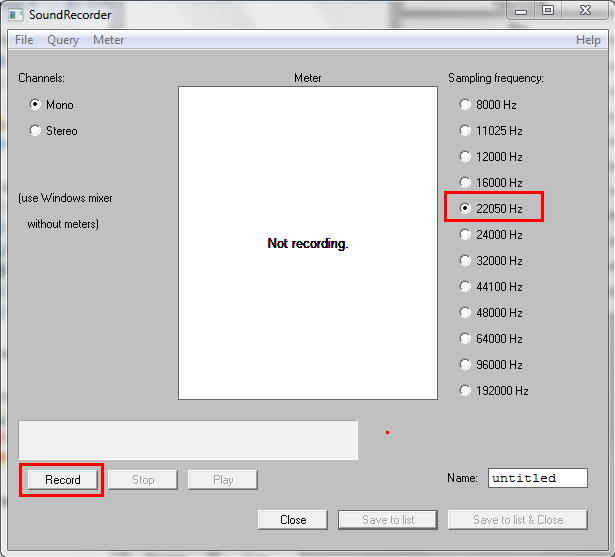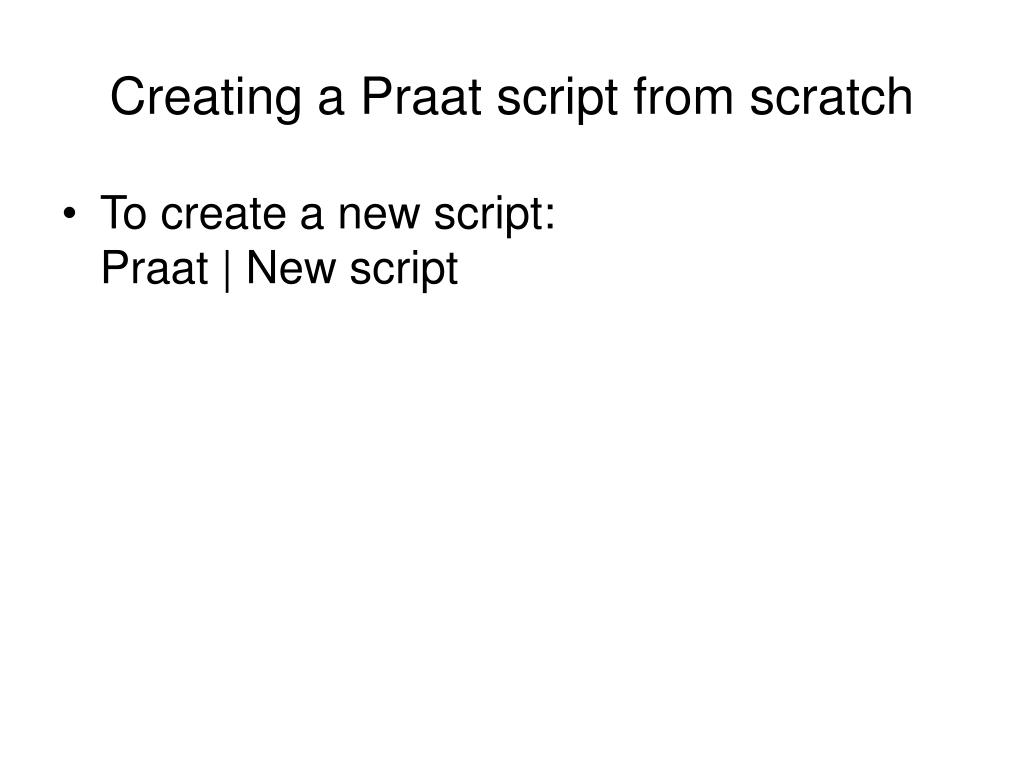
At this time, you can place the cursor at the point and read the blue number on the right side of the window. At this point, a blue line will be placed on the spectrogram representing the pitch.Display the pitch track: Pitch → Show pitch.For example, in Chinese, which is a tone language, each syllable or morpheme may have its own pitch. Pitch is a term used to refer to variations in fundamental frequency (F0), which serves as an important acoustic cue for tone, lexical stress, and intonation.
PRAAT SCRIPT MEASURE VOT HOW TO
To return to a broadband spectrogram, you can click "Spectrum"→ "Spectrogram Settings" → Set the Window Length to 0.005 (or the broadband window length of your choosing) → Click OKĪnd then you’ll be back to the default broadband spectrogram.īefore we illustrate how to measure pitch in Praat, let’s discuss what the pitch is and what it used for. If you set the view range roughly as 0-500 Hz for speech in this narrowband spectrogram, the contours of the harmonics will accurately represent the pitch contours of the voice, which can give you a sense of the pitch (F0) contour before using the Praat pitch tracker for more precise measurement. Now, you can see harmonics clearly in this narrowband spectrogram. You can adjust the window length by clicking " Spectrum" → " Spectrogram Settings" → set the " Window Length" to 0.025s (or the narrowband window length of your choosing) → Click OK. Narrowband spectrogram (Window Length: 0.025s ) can be used to look at the harmonics structure (F0 / Pitch information) (Figure 1.53).Broadband spectrogram ( Window Length: 0.005s) is used to observe the formant structure of sound, and it is the default setting in Praat.Wideband spectrogram is used to observe the formant structure while narrowband spectrograms reveal the harmonic structure (pitch information). For the window length around 20-30ms (bandwidth: 30-50Hz), the spectrogram is called "narrowband". There is no clear cut boundary between Broadband spectrograms and Narrowband spectrograms, if the window length is around 3-5 ms (bandwidth: 200-300Hz), the resulting spectrogram is called "wideband". The shorter the window length, the larger its bandwidth (Bandwidth = 1.299 / window length).

Praat can provide you with both Broadband spectrogram and Narrowband spectrogram by adjusting the window length.

You can adjust the View range by clicking "Spectrum" → "Spectrogram Settings" For music, we may need to focus on the area from 100 to 2,000 Hz. For speech, we normally set the range from 0 to 5,000 or 6,000 Hz, but for examining fricatives, we might need to set it as high as 15,000 Hz. View range decides how much of the spectrum is shown. The most important settings here are the window length and view range. To compare your F1 and F2 values to mine, click here to see my answers: F1 and F2 values for stress vowels in Spanish Once you’ve compared your answers to those below, you will use your measurements to plot vowels in the next section.Normally the waveform and spectrogram will be presented automatically if you select one file and click "View and Edit"as Figure 1.50. Since F1 and F2 values will vary depending upon the exact location you select in the vowel, the values listed below may vary somewhat from your answers. We will check our answers once everyone is finished. This chart is also included in your handout or you can simply write the values in your notebook. SP stressed vowels male mono.wav 3.2 Activity: Measuring formantsįor this activity, measure the values of F1 and F2 of the vowels in bold below and plot them in the following chart.
PRAAT SCRIPT MEASURE VOT DOWNLOAD
In order to complete the exercises for this section, you should download the following sound file: 2.0 Video: 3.0 Materials and Activity: 3.1 Sound file to download: For this section, you will learn what formants are and how to measure formants in a language in order to plot vowels. By measuring vowel formants, specifically Formant 1 and Formant 2 (or F1 and F2) we can pinpoint approximately where the vowel is produced in the mouth. The frequencies at which these black bands occur are different in the /a/ vowel than they are in the /e/ vowel, for example.

These black bands are what determine the phonetic quality of the vowel.
PRAAT SCRIPT MEASURE VOT SERIES
When you examine a spectrogram in PRAAT, you can see a series of dark black bands that run through the vowels. Unlike consonants, vowels have energy at many frequencies. Formants represent several prominent bands of frequency or energy that is measured in hertz.

Whenever you are analyzing or documenting a language, you have to analyze the vowel system and in order to understand the vowel system of any language, you have to know what formants are.


 0 kommentar(er)
0 kommentar(er)
